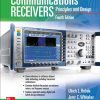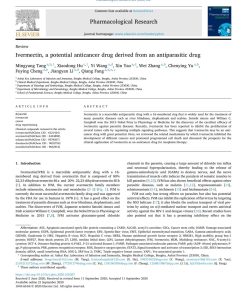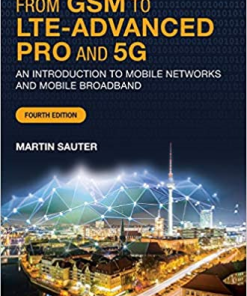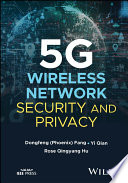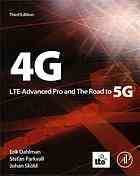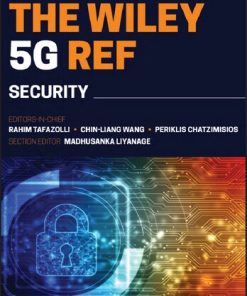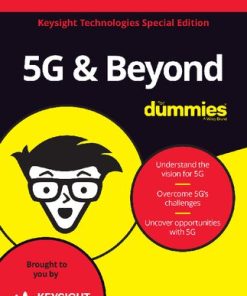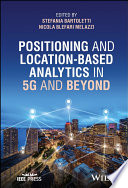5G NR and Enhancements From R15 to R16 1st edition by Hai Tang, Ning Yang, Zhi Zhang, Zhongda Du, Jia Shen 0323911191 9780323911191
$50.00 Original price was: $50.00.$25.00Current price is: $25.00.
5G NR and Enhancements : From R15 to R16 1st edition by Hai Tang, Ning Yang, Zhi Zhang, Zhongda Du, Jia Shen – Ebook PDF Instant Download/DeliveryISBN: 0323911191, 9780323911191
Full download 5G NR and Enhancements : From R15 to R16 1st edition after payment.
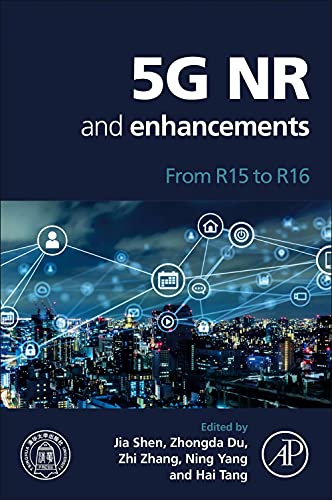
Product details:
ISBN-10 : 0323911191
ISBN-13 : 9780323911191
Author: Hai Tang, Ning Yang, Zhi Zhang, Zhongda Du, Jia Shen
5G NR and Enhancements: From R15 to R16 introduces 5G standards, along with the 5G standardization procedure. The pros and cons of this technical option are reviewed, with the reason why the solution selected explained. The book’s authors are 3GPP delegates who have been working on 4G/5G standardization for over 10 years. Their experience with the 5G standardization process will help readers understand the technology. Thousands of 3GPP papers and dozens of meeting minutes are also included to help explain how the 5G stand came into form.
5G NR and Enhancements : From R15 to R16 1st Table of contents:
Chapter 1. Overview
Abstract
1.1 Introduction
1.2 Enhanced evolution of new radio over LTE
1.3 New radio’s choice of new technology
1.4 Maturity of 5G technology, devices, and equipment
1.5 R16 enhancement technology
1.6 Summary
References
Chapter 2. Requirements and scenarios of 5G system
Abstract
2.1 Current needs and requirements in the 5G era
2.2 Typical scenarios
2.3 Key indicators of 5G systems
2.4 Summary
References
Chapter 3. 5G system architecture
Abstract
3.1 5G system architecture
3.2 The 5G RAN architecture and deployment options
3.3 Summary
References
Further reading
Chapter 4. Bandwidth part
Abstract
4.1 Basic concept of bandwidth part
4.2 Bandwidth part configuration
4.3 Bandwidth part switching
4.4 Bandwidth part in initial access
4.5 Impact of bandwidth part on other physical layer designs
4.6 Summary
References
Chapter 5. 5G flexible scheduling
Abstract
5.1 Principle of flexible scheduling
5.2 5G resource allocation
5.3 Code Block Group
5.4 Design of NR PDCCH
5.5 Design of NR PUCCH
5.6 Flexible TDD
5.7 PDSCH rate matching
5.8 Summary
References
Chapter 6. NR initial access
Abstract
6.1 Cell search
6.2 Common control channel during initial access
6.3 NR random access
6.4 RRM measurement
6.5 Radio link monitoring
6.6 Summary
References
Chapter 7. Channel coding
Abstract
7.1 Overview of NR channel coding scheme
7.2 Design of polar code
7.3 Design of low-density parity-check codes
7.4 Summary
References
Chapter 8. Multiple-input multiple-output enhancement and beam management
Abstract
8.1 CSI feedback for NR MIMO enhancement
8.2 R16 codebook enhancement
8.3 Beam management
8.4 Beam failure recovery on primary cell(s)
8.5 Beam failure recovery on secondary cell(s)
8.6 Multi-TRP cooperative transmission
8.7 Summary
References
Further reading
Chapter 9. 5G radio-frequency design
Abstract
9.1 New frequency and new bands
9.2 FR1 UE radio-frequency
9.3 FR2 radio-frequency and antenna technology
9.4 New radio test technology
9.5 New radio RF design and challenges
9.6 Summary
References
Chapter 10. User plane protocol design
Abstract
10.1 Overview
10.2 Service data adaptation protocol
10.3 Packet data convergence protocol
10.4 Radio link control
10.5 Medium access control
10.6 Summary
References
Chapter 11. Control plan design
Abstract
11.1 System information broadcast
11.2 Paging
11.3 RRC connection control
11.4 RRM measurement and mobility management
11.5 Summary
References
Chapter 12. 5G network slicing
Abstract
12.1 General descriptions
12.2 Network slicing as a service in the 5G system
12.3 Network slice congestion control
12.4 Network slice in roaming case
12.5 Network slice specific authentication and authorization
12.6 Summary
References
Chapter 13. Quality of service control
Abstract
13.1 5G quality of service model
13.2 End-to-end quality of service control
13.3 Quality of service parameters
13.4 Reflective quality of service
13.5 Quality of service notification control
13.6 Summary
References
Further reading
Chapter 14. 5G voice
Abstract
14.1 IP multimedia subsystem (IMS)
14.2 5G voice solutions and usage scenarios
14.3 Emergency call
14.4 Summary
References
Chapter 15. 5G Ultra-reliable and low-latency communication: PHY layer
Abstract
15.1 Physical downlink control channel enhancement
15.2 UCI enhancements
15.3 UE processing capability enhancements
15.4 Data transmission enhancements
15.5 Configured grant transmission
15.6 Semipersistent transmission
15.7 Inter-UE multiplexing
15.8 Summary
References
Chapter 16. Ultra reliability and low latency communication in high layers
Abstract
16.1 Timing synchronization for industrial ethernet
16.2 Dynamic authorization versus configured grant and configured grant versus configured grant
16.3 Dynamic authorization versus dynamic authorization
16.4 Enhancements to the semipersistent scheduling
16.5 Enhancement to packet data convergence protocol data packet duplication
16.6 Ethernet header compression
16.7 Summary
References
Chapter 17. 5G V2X
Abstract
17.1 NR–V2X slot structure and physical channel
17.2 Sidelink resource allocation
17.3 Sidelink physical layer procedure
References
Chapter 18. 5G NR in the unlicensed spectrum
Abstract
18.1 Introduction
18.2 Channel sensing
18.3 Initial access procedure
18.4 Wideband operation and physical channel enhancements
18.5 Hybrid automatic repeat request and scheduling
18.6 NR–unlicensed with configured grant physical uplink shared channel
18.7 Summary
References
Chapter 19. 5G terminal power-saving
Abstract
19.1 Requirements and evaluation of power-saving techniques for 5G
19.2 Power-saving signal design and its impact on DRX
19.3 Cross-slot scheduling
19.4 MIMO layer restriction
19.5 SCell dormancy
19.6 RRM measurement relaxation
19.7 Terminal assistance information for power-saving
19.8 Summary
References
Further reading
Chapter 20. Prospect of R17 and B5G/6G
Abstract
20.1 Introduction to Release 17
20.2 Technologies targeting high data rate
20.3 Coverage extension technology
20.4 Vertical application enabling technology
20.5 Summary
People also search for 5G NR and Enhancements : From R15 to R16 1st:
5g nr features
5g nr events
what is 5g nr technology
5g nr specifications
5g enhancement
Tags: 5G NR, Enhancements, Hai Tang, Ning Yang, Zhi Zhang, Zhongda Du, Jia Shen
You may also like…
Politics & Philosophy - Anthropology
Communication, Civilization and China: Discovering the Tang Dynasty Bin Li
Computers - Networking
Engineering - Telecommunications
Computers - Networking


